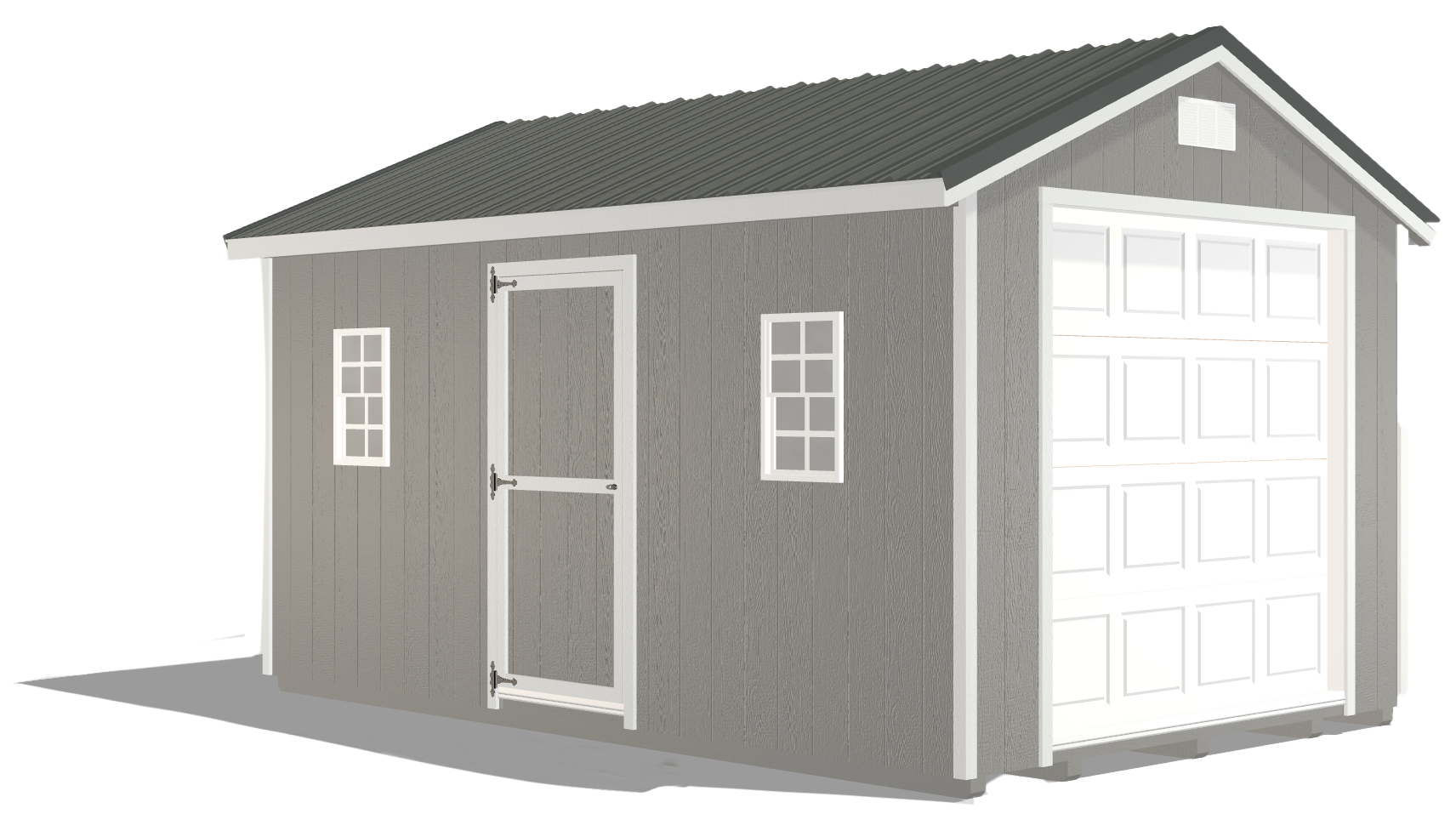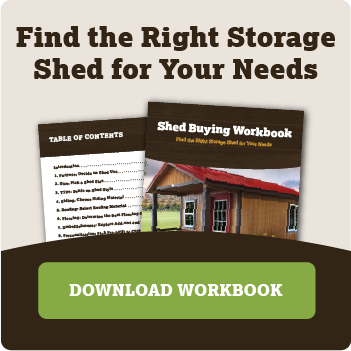A Step-by-step Guide to Selecting the Right Shed for Your Needs
by Dakota Storage Buildings, on March 20, 2024
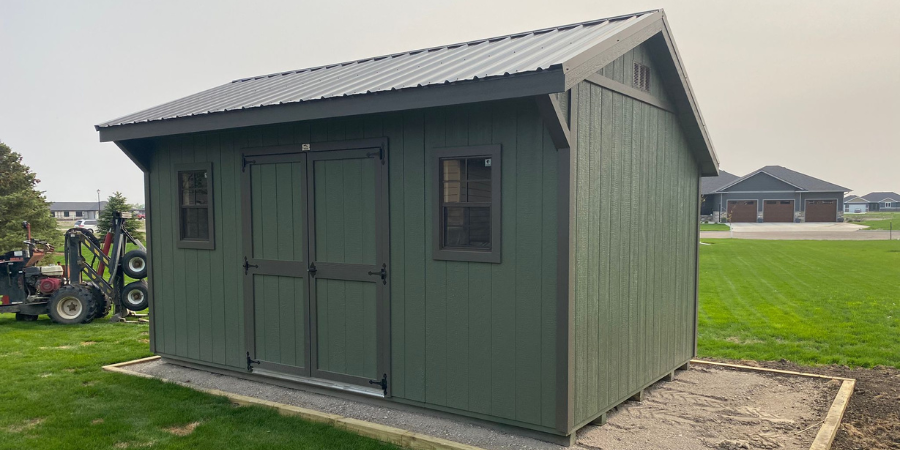
When it comes to the process of shed buying, selecting the ideal storage shed from the wide selection available in the market can transform what should be an exciting shopping experience into an overwhelming task. Each shed offers a unique set of features and benefits, making the decision process seem complicated, from various sizes and styles to numerous material options for your storage shed plans. This comprehensive guide is meticulously crafted to ease the stress and confusion that can occur during this process. Whether you are seeking a functional workshop, additional overflow storage, a personalized she shed, or a cozy man cave, our focus is on helping you identify and select storage sheds that not only perfectly align with your specific needs but also offer exceptional value for your investment.
Navigating the Shed Buying Process
Whether you are a first-time buyer or looking to upgrade your current setup, these carefully curated steps will help ensure that you choose a shed that not only meets your specific requirements but also enhances the functionality and aesthetic of your property. Let's dive into the details and start shaping the vision of your ideal shed.
1. Find the Perfect Size and Location
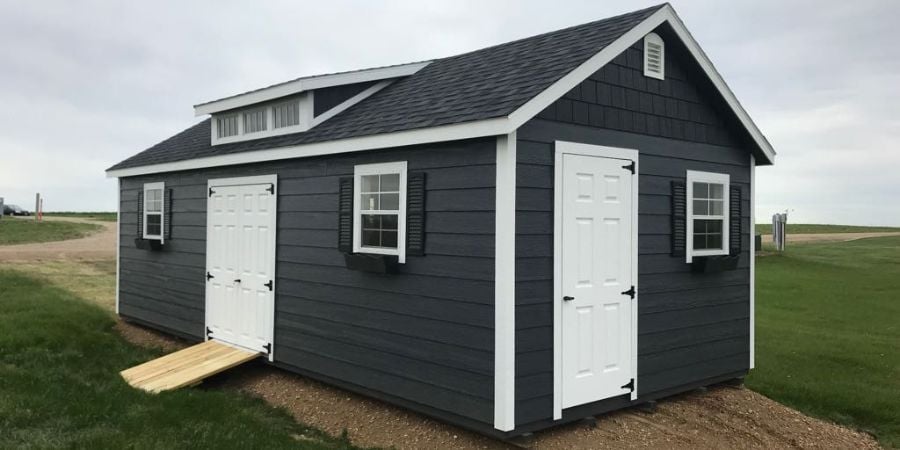
The initial step when buying a shed may seem straightforward but can often be quite challenging. Before you pick out various styles and features for the shed, you must accurately assess the space where the shed will be placed and which size option is best for your yard. This crucial step involves measuring the available area in your yard or garden and considering how the shed will integrate into the existing landscape and its proximity to other structures. When evaluating the space, it is important to leave sufficient clearance around the shed for ease of access and maintenance. You should consider how the shed’s placement might affect your property's overall aesthetics and functionality.
Small Sheds: Small sheds are typically best for modest storage needs like garden tools, seasonal decorations, or sports equipment. They can fit snugly in limited spaces and do not typically require extensive groundwork or alterations to your yard layout.
Medium-sized Sheds: Medium-sized sheds offer a balance between storage capacity and footprint, making them suitable for a wider range of uses. They can accommodate larger items like bicycles, lawnmowers, or a modest amount of workshop equipment, all while still fitting comfortably in most suburban yards.
Large Sheds: Large sheds are perfect for those who need substantial storage space or want to use their shed as a workshop, hobby area, or even a home office. These sheds can house larger equipment and extensive tools while providing ample space for movement and activities inside. However, they require a significant amount of clear space in your yard and may need more complex preparation in terms of foundation and placement.
By thoughtfully determining the available space and selecting the appropriate size category for your shed, you lay a solid foundation for the next steps in your shed-buying process. This careful planning not only ensures that your shed fits well within your property but also enhances its functionality and aesthetic appeal.
2. Select Durable Materials
Selecting the right material is crucial for the durability of your shed and its overall appearance. The type of roofing you choose can significantly affect the longevity of the shed and its ability to withstand various weather conditions. Options range from traditional shingles, which offer a classic look and are available in a variety of colors and styles, to metal roofing, known for its durability and resistance to extreme weather. Metal roofs are also low maintenance and can be more energy-efficient, reflecting sunlight and helping keep the shed cooler in summer. It is important to consider factors like the climate in your area, the level of maintenance you are willing to undertake, and the aesthetic appeal you desire when choosing your roofing material.
The siding of your shed plays a pivotal role in determining its overall aesthetics, its ability to resist environmental elements, and the level of maintenance it will require. Wood siding offers a traditional and natural look, bringing warmth and classic beauty to your shed. However, it may require more maintenance, such as painting or staining to prevent decay. Vinyl siding, on the other hand, is a low-maintenance option that resists moisture and fading, and it comes in a variety of colors and styles. Steel siding is another durable choice, known for its strength and longevity. It can withstand harsh weather conditions and is resistant to fire and pests.
The flooring of your shed should be sturdy and appropriate for its intended use. When selecting a flooring material, consider the weight of the items you will store or the activities you plan to do inside the shed. For heavy-duty use, such as storing large equipment or operating machinery, a concrete floor might be the best option due to its strength and durability. For general storage or lighter activities, wood flooring could provide a sufficient and more cost-effective solution. If you plan to use the shed as a workshop or spend significant time inside, you might also consider comfort and ease of cleaning. It is also important to think about moisture resistance, especially if the shed will be exposed to the elements or if you are storing items that need to be kept dry. Flooring choices like vinyl or treated wood can offer greater resistance to moisture and mold.
3. Consider Optional Add-ons
.jpg?width=900&height=450&name=Blog_Shed%20Features_900x450%20(1).jpg)
When considering the design of your storage shed, it is important to look beyond the basic structure and think about the additional features that can enhance both its functionality and aesthetics. Each add-on offers an opportunity to enhance the usability and aesthetic appeal of your shed, turning it into a space that truly meets your unique needs and reflects your personal style.
Shelving is a crucial add-on for optimizing storage space. Whether you need deep shelves for bulky items or smaller ones for organizing tools and materials, the right shelving can transform your shed into an orderly and efficient space. Workbenches are another popular feature, especially if you are planning to use your shed as a workshop or hobby area. A sturdy, well-placed workbench can provide a comfortable and practical workspace for a variety of projects.
The types of windows you choose can significantly impact the amount of natural light in your shed as well as its overall look. Larger windows can brighten up the space and make it more welcoming, whereas smaller, strategically placed windows can provide adequate light while maintaining privacy and security.
Additionally, consider other add-ons like electrical fittings if you need power for tools or lighting, insulation for temperature control if you plan to spend a lot of time in the shed, or even plumbing if your shed will serve as a home office or studio. Ventilation is another aspect to think about, as proper air circulation is essential for both comfort and preserving the items stored inside.
4. Request a Price Quote
Once you have a clear idea of the location, materials, add-ons, and size of your shed, the next step is to obtain a quote. Getting a quote from a reputable shed manufacturer gives you a clear picture of the cost implications of your choices. Many shed manufacturers offer innovative tools, like a 3D configurator, which allows you to virtually create your shed. With this technology, you can select different materials, sizes, and additional features, seeing how each choice affects the overall look and price of the shed. This level of customization is not only engaging but also extremely helpful in ensuring that the final product will meet your expectations.
After designing your shed in the configurator, the manufacturer will be able to provide you with a detailed quote. This quote should include not only the cost of the shed itself but also any additional costs for delivery, installation, and foundation work if they offer these services. It is important to review this quote carefully, confirming that all your specifications are included and that there are no hidden costs. Quality, warranty, and the manufacturer's reputation are important factors to consider alongside the price. It is worth investing in a shed that not only meets your current needs but will also last for years to come.
5. Explore Payment Options
When it comes to financing your shed, it is important to recognize that each company offers a range of payment plans, each with its own set of terms and conditions. Navigating through these options can be as crucial as selecting the shed itself. It is essential to thoroughly explore the various financing options available to ensure that you find a plan that aligns seamlessly with your financial situation and budget. Installment plans often allow you to spread the cost of the shed over several months or even years, making it more manageable to accommodate this expense in your monthly budget. Assess each option that a company offers carefully, taking into account your current financial situation and future budgeting plans. By doing so, you can ensure that the investment in your shed is not only satisfying in terms of meeting your storage needs but also financially sustainable in the long run.
6. Understand Legal and Community Restrictions
When planning to add storage sheds to your property, it is essential to be fully aware of potential building limitations that could impact your project. These limitations can vary widely depending on your location, and overlooking them can lead to significant issues, including the need to modify or relocate your shed after installation or even legal repercussions. One of the primary considerations is the proximity of the shed to property lines or other structures. Many cities have specific zoning laws that dictate how close a shed can be to your property's boundaries or to buildings like your home or your neighbor's structures. These regulations are often in place to ensure safety, particularly regarding fire hazards and structural integrity. Violating these rules can result in fines or orders to move or alter your shed, which can be both costly and inconvenient.
Color restrictions are another factor that might come into play, especially in neighborhoods with homeowners' associations (HOAs) or in areas with strict aesthetic guidelines. These rules can limit your choice of shed color to ensure it complements the overall look of the community. It is important to check whether such restrictions apply to your area to avoid the expense and hassle of repainting or replacing your shed. Placement stipulations are also crucial to consider. These may include rules about the shed's orientation, the type of foundation it can be placed on, and its distance from features like fences, trees, or public utilities. In some cases, there might be limitations on the shed's height or the type of roofing materials you can use, especially if your shed could obstruct views or interfere with neighborhood aesthetics.
7. Prepare for Your Shed’s Delivery
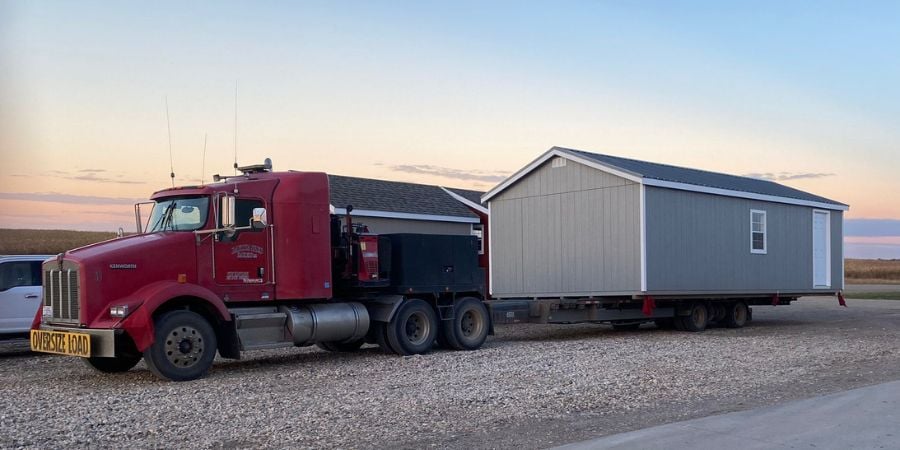
When planning for the delivery of your shed, it is important to consider several key logistical aspects. First, assess the accessibility of your property. Is your home easily reachable by large delivery trucks? If you live in a remote area or a place with narrow roads or low-hanging branches, special arrangements might be required to ensure safe and efficient delivery. It is also vital to ensure that there's a clear path to the location where you plan to install the shed. Another consideration is the method of delivery. Some companies use large trucks that can directly offload the shed, while others might deliver it in sections to be assembled on-site. Understanding the delivery process will help you prepare your property accordingly, ensuring a smooth installation.
The importance of a solid and level foundation for your shed cannot be overstated. A proper foundation is essential for ensuring the stability and longevity of your shed, protecting it from ground moisture, and keeping it level and structurally sound. The type of foundation you will need can vary based on the size and type of shed, as well as the soil conditions of your property. Factor in the cost of the foundation when budgeting during the shed buying process. It is a critical component of the overall investment and skimping on the foundation can lead to issues down the line, such as warping, cracking, or even collapse of the shed. Also, consider whether you will need professional help to prepare the foundation, as this can add to the cost.
Choosing the Right Shed for Your Needs
Finding the right available option for a storage shed that aligns with both your needs and budget can be a daunting task. The sheer diversity in styles, sizes, materials, and features can be overwhelming, making it a task that requires careful thought and consideration. It is crucial to remember that while the size of the shed is undoubtedly a significant factor, it is not the only aspect that demands attention. The intended use of the shed is another critical factor. The purpose will not only influence the size but also the internal layout, the type of foundation, and even the style of the shed.
We highly encourage you to continue your research beyond just size and style. Dive into understanding the specific features that different storage sheds offer and how they align with your personal and practical requirements. To help you in this process, we have developed a free resource, the Shed Buying Workbook. This resource is filled with additional tips and tricks to guide you through each step of the shed-buying process. It covers everything from assessing your needs, understanding zoning laws, and choosing the right materials. By utilizing this workbook, you can gain deeper insights and clarity, helping you make a well-informed decision that ensures your shed purchase is a worthwhile investment.


















